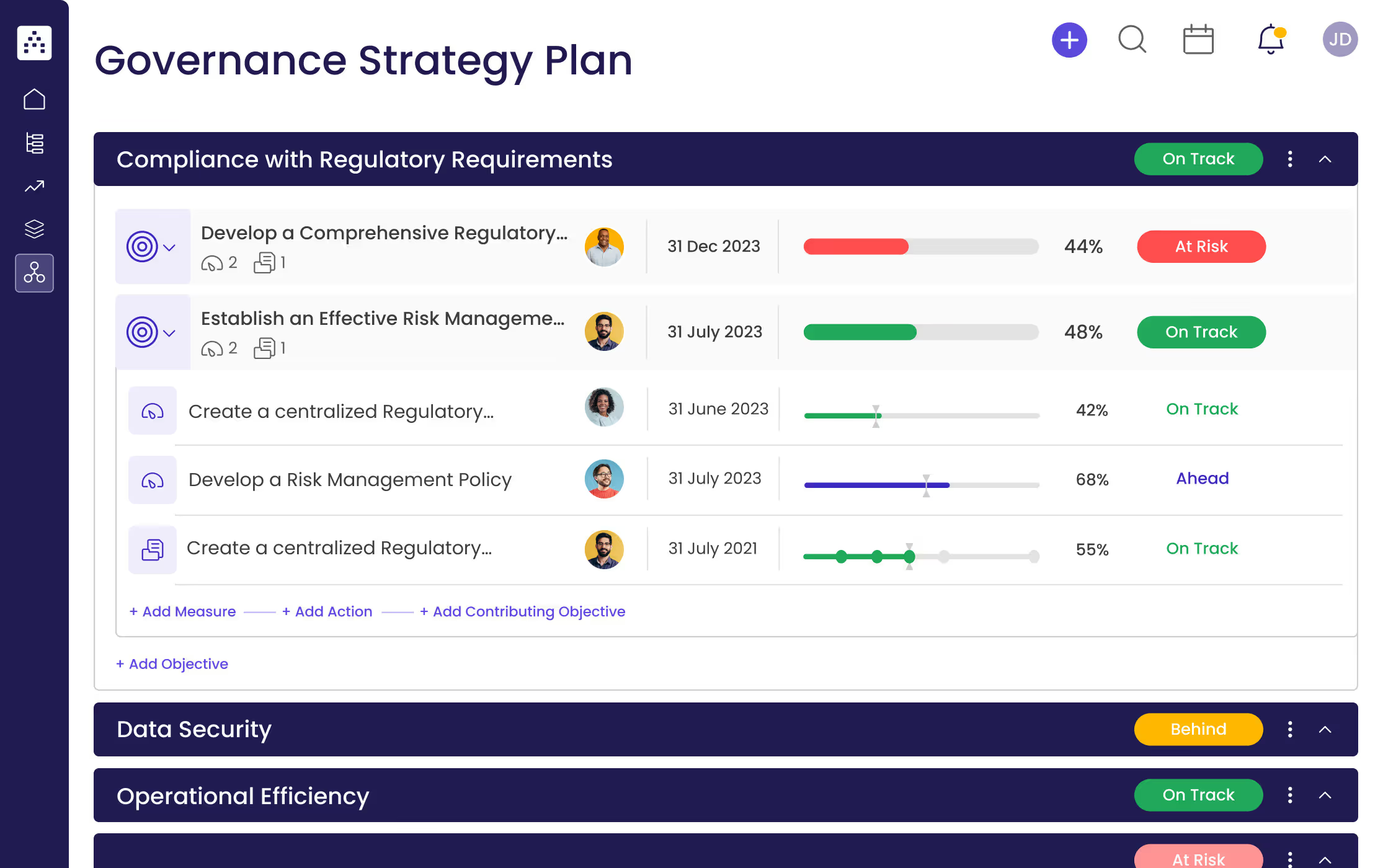What is a Governance Strategy?
A governance strategy is a comprehensive plan that outlines the actions that a company or organization should take in order to comply with applicable regulations and ensure good corporate governance. The strategy typically outlines the objectives, projects, and KPIs (key performance indicators) that should be achieved in order to comply with regulations and meet the company's goals. It also outlines the roles and responsibilities of each member of the governance team and includes strategies for monitoring the progress of the strategy.
What's included in this Governance Strategy template?
- 3 focus areas
- 6 objectives
- 6 projects
- 6 KPIs
Each focus area has its own objectives, projects, and KPIs to ensure that the strategy is comprehensive and effective.
Who is the Governance Strategy template for?
The Governance Strategy template is designed for corporate governance teams who need to create an effective strategy for ensuring their organization is compliant with applicable laws and regulations. The template can be tailored to fit the specific needs of each organization and can help to create a comprehensive plan for managing risk and ensuring compliance.
1. Define clear examples of your focus areas
Focus areas are the main topics or areas of concentration that the governance strategy should address. Examples of focus areas include compliance with regulatory requirements, data security, employee development, and financial reporting. By defining these focus areas, it will be easier for the governance team to create objectives and measure progress towards them.
2. Think about the objectives that could fall under that focus area
Objectives are the goals that the governance team should strive to achieve in order to meet its overall strategy. Objectives should be specific, measurable, achievable, relevant, and time-bound (SMART). For each focus area, the governance team should create a list of objectives that are related to that topic.
Examples of some objectives for the focus area of Compliance with Regulatory Requirements could be: Develop a Comprehensive Regulatory Compliance Program, and Establish an Effective Risk Management Process.
3. Set measurable targets (KPIs) to tackle the objective
KPIs are measurable targets that can be used to measure progress towards an objective. KPIs should be related to the objective and should be measurable in order to track progress. Examples of KPIs include completion rate, customer satisfaction, and cost savings.
An example of a KPI for the focus area of Compliance with Regulatory Requirements could be: Create a centralized Regulatory Compliance Team.
4. Implement related projects to achieve the KPIs
Projects (or actions) are the steps that should be taken in order to achieve the objectives. Projects should be related to the objectives and should be achievable in the given timeframe. Projects could include developing a training program, implementing a risk management policy, or creating a data security monitoring process.
An example of a project related to Compliance with Regulatory Requirements could be: Create a centralized Regulatory Compliance Team.
5. Utilize Cascade Strategy Execution Platform to see faster results from your strategy
Cascade Strategy Execution Platform is a platform designed to help organizations create and manage their governance strategies. It allows teams to create objectives, set KPIs, and track progress towards their goals. The platform also provides data-driven insights to help teams understand their progress and make more informed decisions.


